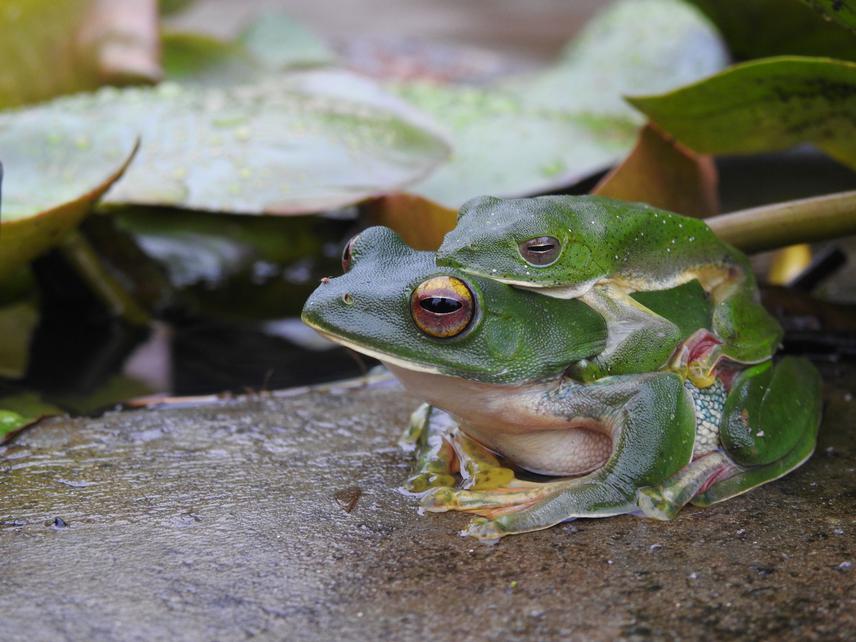Priti Hebbar
Amphibians are most threatened vertebrates and globally 30% of species are threatened with extinction. In spite of this many new frog species have been discovered not just from pristine forests but also from private lands. Private forests harbour tremendous amount of biodiversity but are threatened due to conversion of forests into agriculture. Studies from India show that private forests are under serious threat due to developmental activities but need more scientific studies to determine the conservation potential. In this study we will determine diversity and distribution of frogs from two private forests of Kodagu region of Western Ghats. We will also train local people and visitors of private forests about amphibian identification and need for their conservation by undertaking amphibian trails and by building batracharium.

R. malabaricus pair.
Among vertebrates, amphibians are known to be most threatened species and many of them have gone extinct. Habitat fragmentation, climate change and disease could increase the risk of the remaining species. Western Ghats amphibians show remarkable diversity and more than 80% of them are endemic. Recently, many new species have been discovered from outside protected areas, such as private lands that are under tremendous pressure for development.
Private forests are forest land owned by individuals, families, corporates, tribes or organizations. Private forests can harbour tremendous amount of biodiversity. At the same time they can change forest ecosystem by affecting species dispersal and distribution, by altering stream hydrology or by conversion of forests to agriculture. In India there are not many studies on biodiversity of private forests. A recent study suggests that many private forests having unique flora and fauna diversity are under serious threat due to developmental activities. Basic information on species diversity, abundance, distribution and ecology of the species from such private lands can be helpful for creating awareness among local people and can help in long term conservation efforts.
In this study, I will evaluate the composition of frogs in two private forests in Kodagu region of Western Ghats. My work will help in getting a baseline estimation of amphibian diversity in private forests of Kodagu. From an ecological point of view, the data will help in understanding the frog assemblages and factors that are responsible for the structure.
For my work, I will primarily involve up to 5 local people (private forest owners, workers in these private forests and their dependents) in each site. These private forests are also tourist destinations, hence I will organize amphibian trails around these forests so that visitors can know the kind of amphibian diversity these forests have, train people to identify amphibians and explain them about ethics of handling amphibians which can further enable them to identify amphibians in their hometowns. Together with my team, I propose to build a batracharium in one of the field site, Honey valley homestay. Batracharium is an in situ place for observing frogs so that people can observe and understand about frogs in their natural habitats. Apart from this, handouts of frogs from the two private forests will also be developed and distributed in homestays, local schools and colleges.